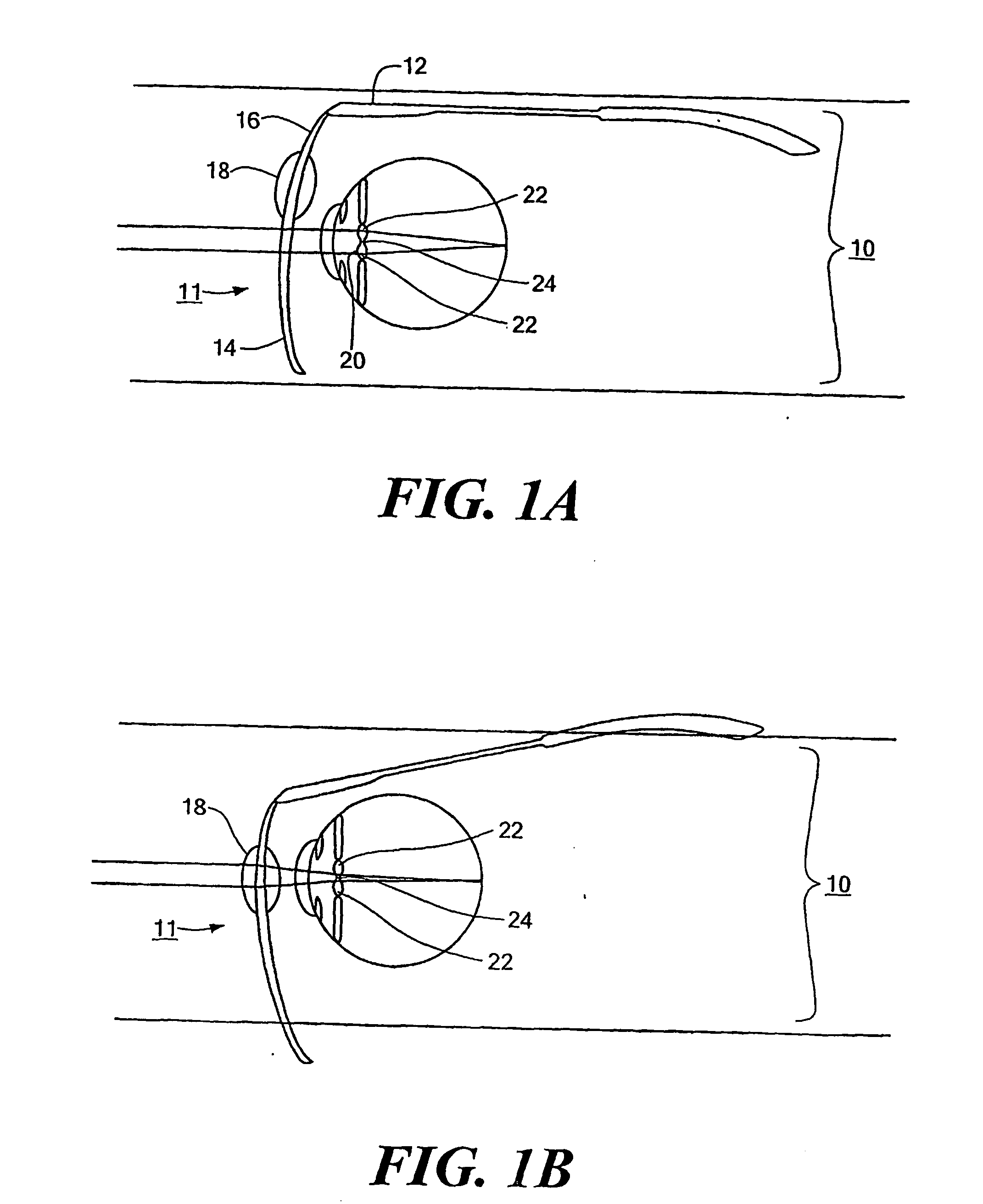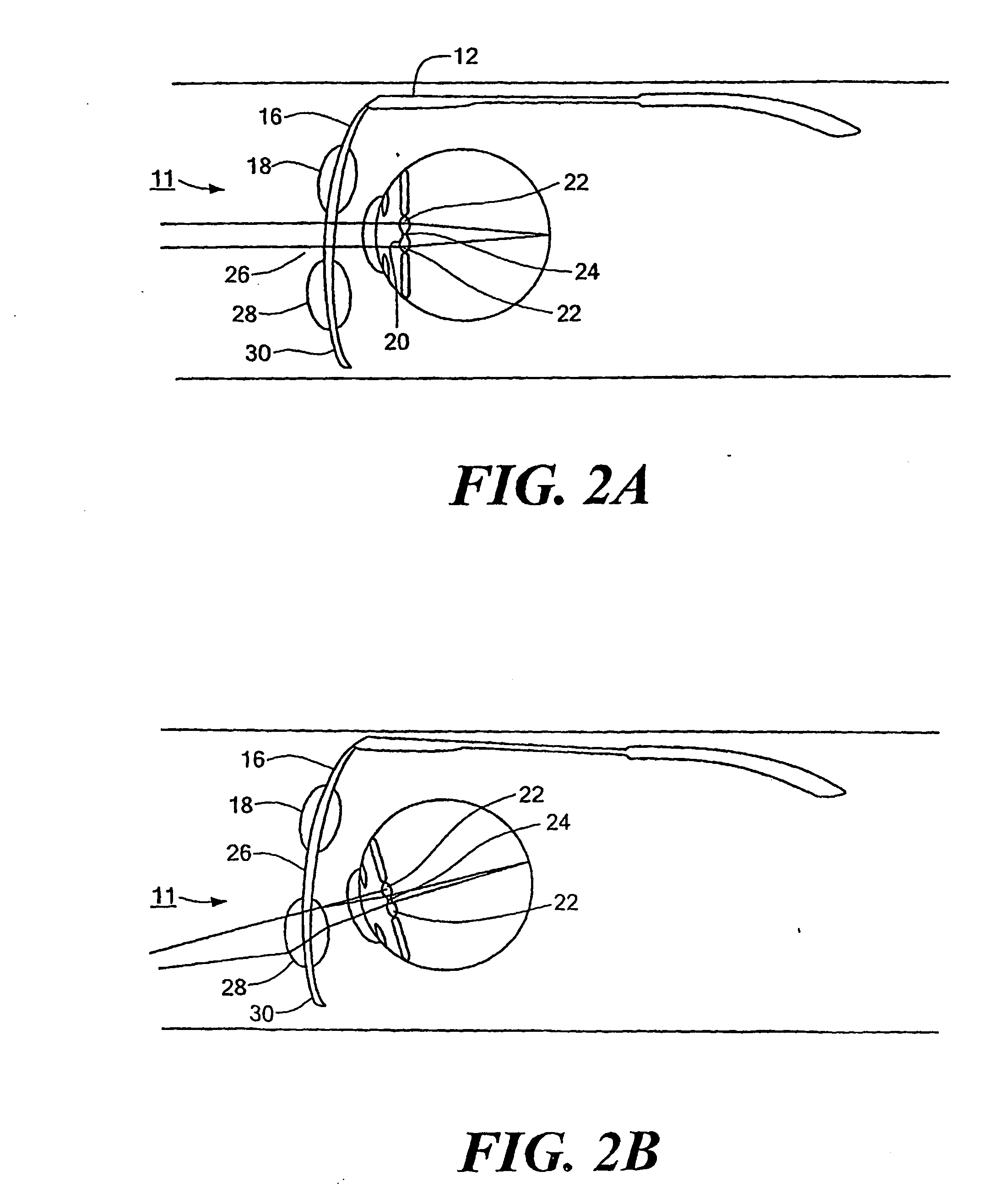Double bifocal intraocular lens-spectacle telescopic device for low vision use
a telescopic device and intraocular lens technology, applied in the field of vision correction systems, can solve the problems of limiting the patient's range of activities, affecting driving and reading, and affecting the patient's vision to the level of 20/200 or worse, so as to improve the magnification of objects, enhance vision, and magnify retinal images
- Summary
- Abstract
- Description
- Claims
- Application Information
AI Technical Summary
Benefits of technology
Problems solved by technology
Method used
Image
Examples
Embodiment Construction
[0019] In a preferred embodiment of the bifocal telescopic intraocular-lens (IOL) spectacle device according to the invention, an intraocular lens having a first optical configuration operates in conjunction with a spectacle lens having a second optical configuration to provide for two or more modes of vision that are suitable for normal and enhanced vision for people having low vision disorders. As depicted in FIG. 1A, a telescopic bifocal IOL-spectacle device 10 includes an IOL 20 and a spectacle carrier lens 11 in optical communication with one another.
[0020] In particular, the IOL 20 includes an outer annular region 22 having a first optical power and an inner region 24 having a second optical power. FIGS. 1A and 1B further depict the spectacle carrier lens 11 with lower and upper regions 14 and 16 respectively. In particular, the lower region 14 includes the center portion of the carrier lens that is aligned with the pupil of the eye in the primary position of gaze. The lower ...
PUM
 Login to View More
Login to View More Abstract
Description
Claims
Application Information
 Login to View More
Login to View More - R&D
- Intellectual Property
- Life Sciences
- Materials
- Tech Scout
- Unparalleled Data Quality
- Higher Quality Content
- 60% Fewer Hallucinations
Browse by: Latest US Patents, China's latest patents, Technical Efficacy Thesaurus, Application Domain, Technology Topic, Popular Technical Reports.
© 2025 PatSnap. All rights reserved.Legal|Privacy policy|Modern Slavery Act Transparency Statement|Sitemap|About US| Contact US: help@patsnap.com



